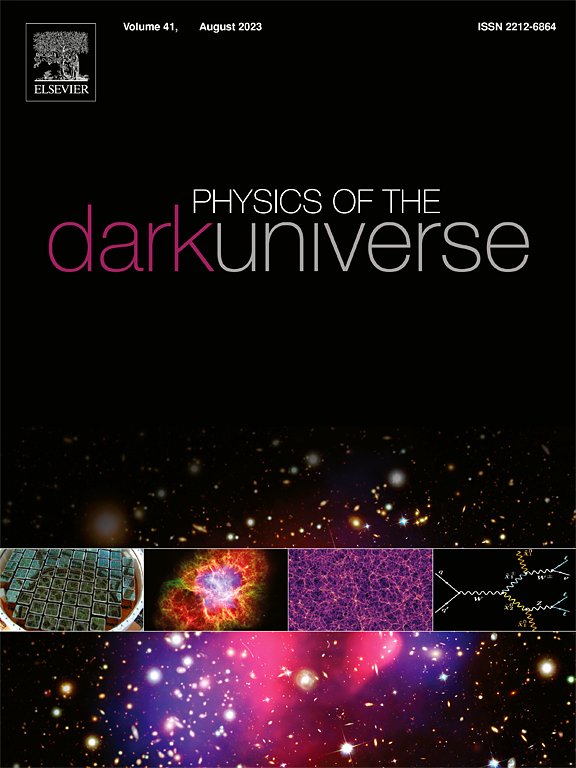Observational constraints on a generalized equation of state model
IF 5
2区 物理与天体物理
Q1 ASTRONOMY & ASTROPHYSICS
引用次数: 0
Abstract
We investigate the cosmological implications of a generalized total equation of state (EoS) model by constraining its parameters using observational datasets to effectively characterize the universe’s expansion history and its dynamic properties. We introduce three parameters: , , and to capture the EoS behavior across different evolutionary phases. Our analysis indicates that at high redshifts (), the EoS approaches a matter- or radiation-dominated regime, transitioning to a dark energy-dominated phase as , where it tends toward a constant value . Using a Markov Chain Monte Carlo (MCMC) method, we analyze a combined dataset that includes 31 data points from and 1701 data points from the Pantheon+ dataset. The results reveal a smooth transition from deceleration to acceleration in the universe’s expansion, with current EoS values suggesting quintessence-like behavior. The model aligns with observations and indicates that dark energy is dynamically evolving rather than acting as a cosmological constant. Furthermore, energy conditions and stability analyses highlight the nature and future of dark energy. This parametrized EoS model thus offers a robust framework for understanding the complexities of dark energy and the evolution of the cosmos.
求助全文
约1分钟内获得全文
求助全文
来源期刊

Physics of the Dark Universe
ASTRONOMY & ASTROPHYSICS-
CiteScore
9.60
自引率
7.30%
发文量
118
审稿时长
61 days
期刊介绍:
Physics of the Dark Universe is an innovative online-only journal that offers rapid publication of peer-reviewed, original research articles considered of high scientific impact.
The journal is focused on the understanding of Dark Matter, Dark Energy, Early Universe, gravitational waves and neutrinos, covering all theoretical, experimental and phenomenological aspects.
 求助内容:
求助内容: 应助结果提醒方式:
应助结果提醒方式:


